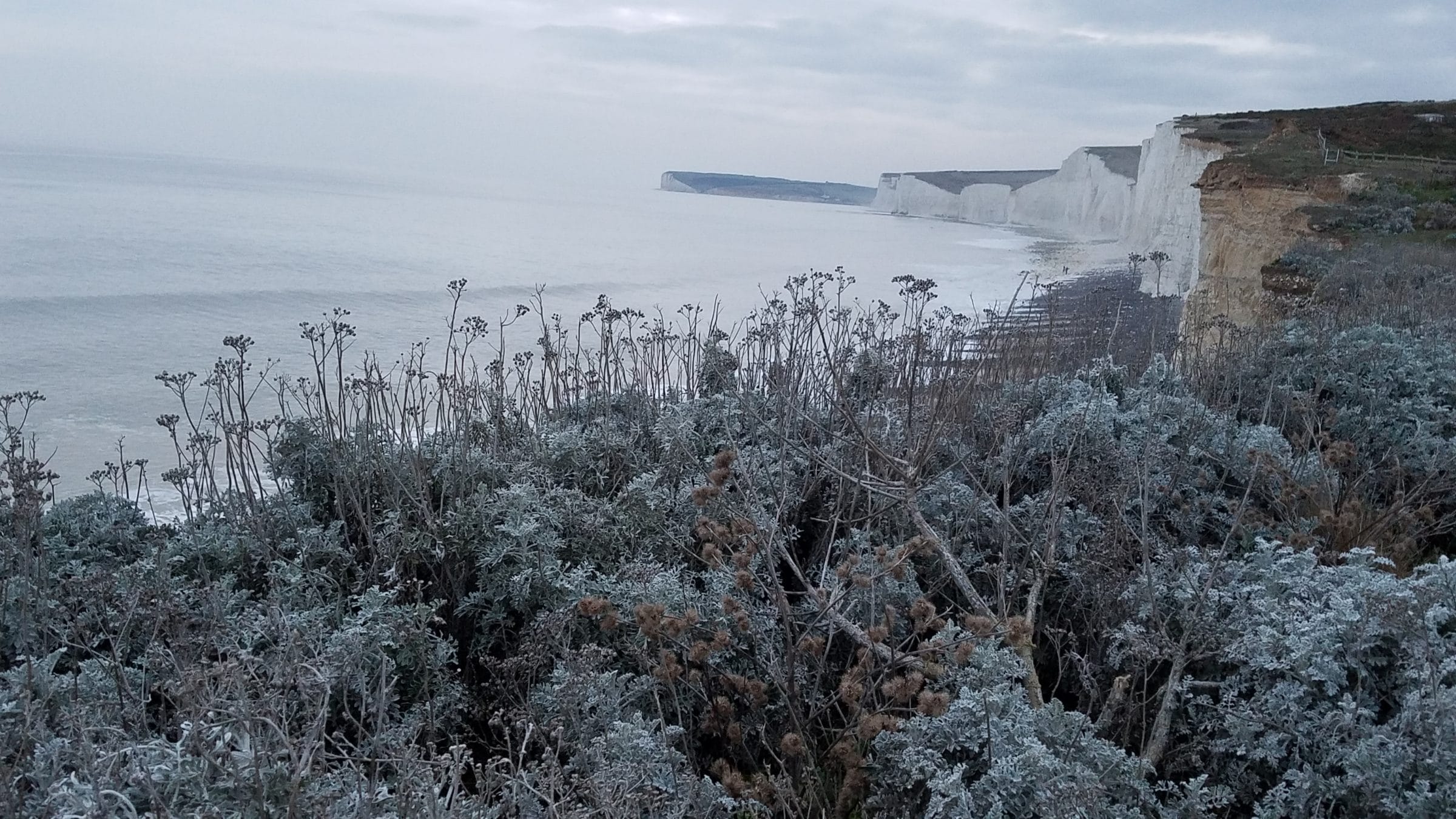
Difference Between Jacobaea maritima and Centaurea cineraria
Certain plants have very unique characteristics that make them easy to identify. For example, the Monkey Puzzle Tree (Araucaria araucana) and its sharp, scale-like leaves and horizontal branching habit are easy to distinguish from other evergreen conifers. On the other hand, some plants give little clues as to who they are. Perhaps they are quite rare in the wild, have inconspicuous flowers, or foliage without any unique features. In another scenario, the plant in question is quite familiar, however, shares very similar features to another plant. This is the case in regards to Jacobaea maritima and Centaurea cineraria.
Garden writers have confused the two, among other Centaurea sp. ( Centaurea gymnocarpa, Centaurea cineraria ‘Colchester White’, Centaurea ragusina), which has led to confusion among horticulturalists, gardeners, and most importantly students trying to study for a plant identification test.
On their own, both Jacobaea maritima and Centaurea cineraria possess fairly distinguishable characteristics. The problem arises when trying to discern which one is which. Let us take a closer look at the similarities and differences between the two.
Similarities
The most obvious similarity is the common name of Dusty-Miller. It suits each plant as both have a tomentous and glaucous foliage that make them exceptional accent plants for various situations. The texture and color of the leaves are not the only physiological trait they share. Habit and form could also be easily confused. In ideal situations, mature plants can reach a height of 3ft. The fuzzy silver leaves may be lobed or pinnately dissected into oblong segments.

Tomentum on Jacobaea
As with any bluish colored leaf plants, they don’t mind to bask in the sun. You will find them growing in well-drained soil of average fertility in USDA Hardiness Zones 7-11. In their natural habitat, each can be found naturalizing on rocky coastal sites, cliffs, and seashores.
Consequently, their high salt tolerance suits them for seaside gardens. You can also use Jacobaea maritima and Centaurea cineraria interchangeably in moon gardens, in containers, or in cut flower arrangements. Their striking velvety foliage and graceful forms are utilized to accent darker garden schemes and to add elements of structure in gardens lacking architectural plants.
Lastly, both are in the Asteraceae family, possessing similar composite flower structures.
Differences
Jacobaea maritima is endemic to the western and central Mediterranean region and has naturalized in various parts of Europe. Although Centaurea cineraria prefer very similar growing conditions, the straight species originates on the small Italian island of Capraia where it can be found growing on rocky cliffs near the famous Villa San Michele.
Despite the different origins of each plant, they do grow in similar environments which will require a further examination of the plant’s physical form. The biggest difference is that J. maritima has a more two-dimensional appearance to the foliage, while C. cineraria foliage is more sub-divided and finer, producing a three-dimensional appearance.
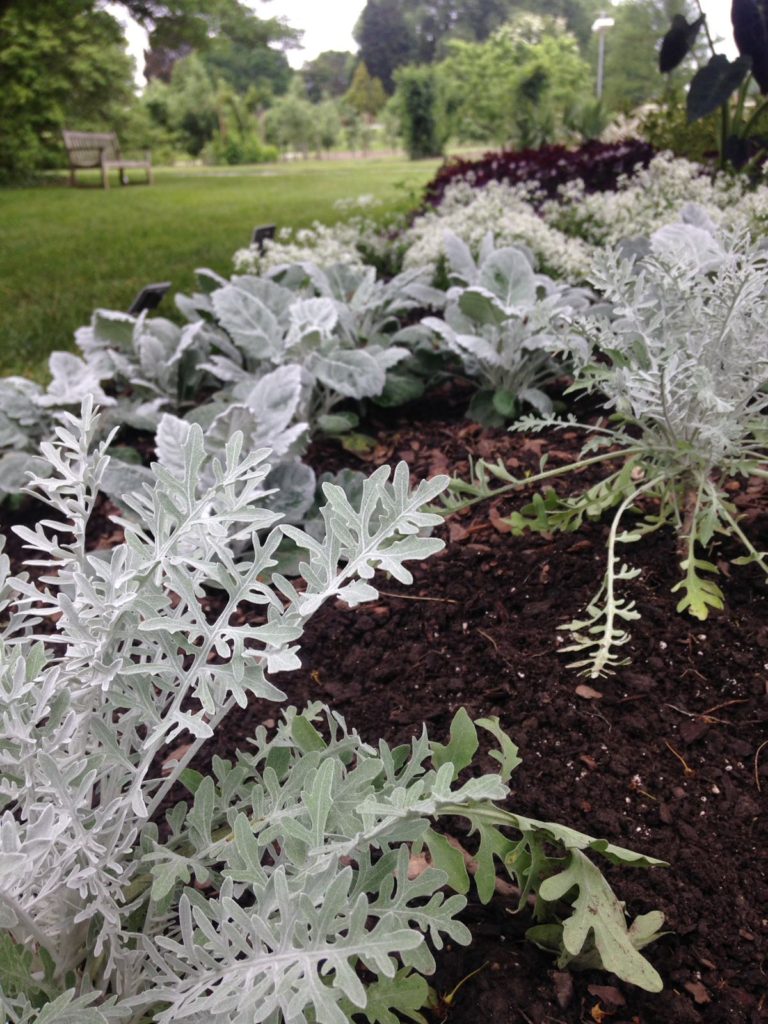
Centaurea and Jacobaea in the background
The overall size of the two plants also bears certain differences. C. cineraria have an initial upright form that eventually becomes arching, spreading to at least 2 1/2 ft. with an overall height of 2 feet. J. maritima , on the other hand, will grow taller, reaching a height of 3 1/2 ft., but its more densely branching habit will contain its spread to a maximum of 1 1/2 ft.
If you are lucky enough to observe the plant while in flower, then the identification becomes quite simple. The flowers of J. maritima are yellow, daisy-like with central disc flowers surrounded by 10-13 ray florets. A clear distinction is the bachelor button lavender to purple flowers of C. cineraria. The thistlelike flowers are borne in spring, arising from involucre bracts that bear conspicuous dark hairs on their top edges.
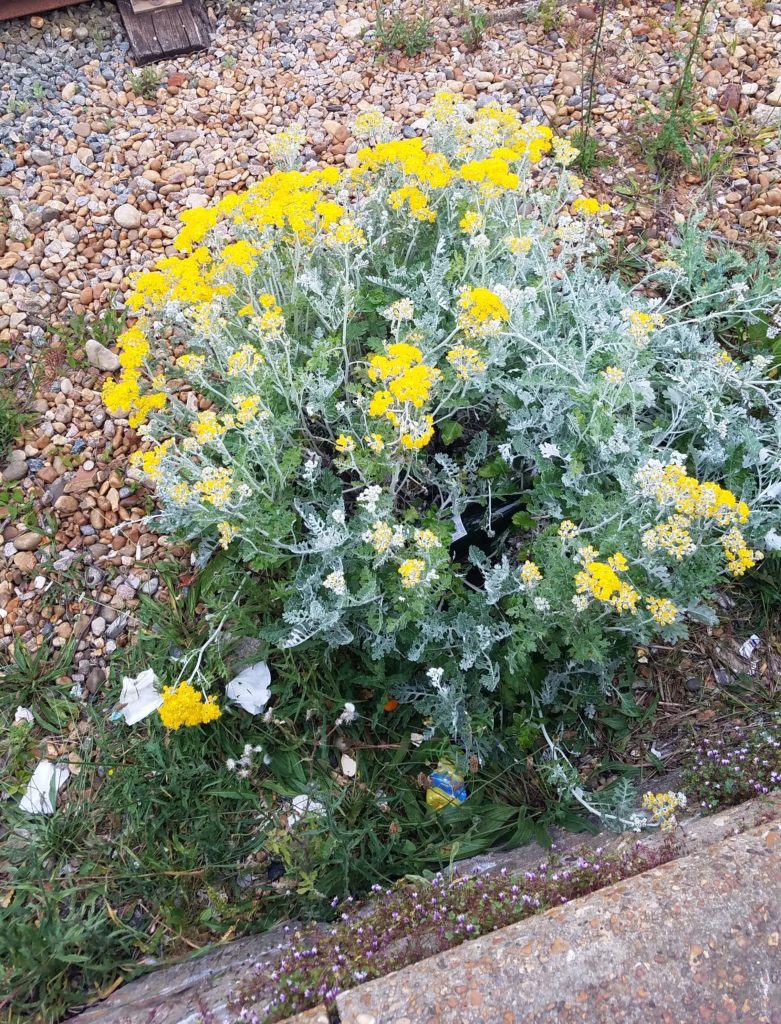
Jacobaea maritima in bloom along the shore in Brighton, England
Comments
- The straight species of Centaurea cineraria is distinguished from other subspecies, forms, and hybrids by the distinctive bracts and leaf morphology. It is rare to see the straight species in ornamental horticulture, with the most common hybrid being C. cineraria ‘Colchester White’.
- The main distribution around the coastal cliffs of Naples, Italy, is of the subspecies cineraria. Another subspecies, circae, dominates the area of the Parco Nazionale del Circeo. This subspecies is more pinnately divided with broader lobes than its cousin subsp. cineraria. Yet another C. cineraria, var. sirenium, grows on the small island of Li Galli, located just south of the Sorrentine Peninsula.
- There have been numerous debates over the years in the taxonomy field over the use of subspecies and variety in relation to the lower ranking of species. A subspecies is generally a group of plants, that due to their geographical location, have somewhat different genetics than the straight species. Varietal classification occurs among a group of plants that live among a similar, but slightly different genetically group of plants of the same species.
- These trivial distinctions have often led to taxonomists using the classifications interchangeably, with many preferring to use subspecies instead of variety, as the latter suggests a cultivated variety. The distinction between variety and form lies in the predictable genetic traits that a group of varietal plants possesses, while a form occurs sporadically within a population.
References
Comments:
Sorry, the comment form is closed at this time.



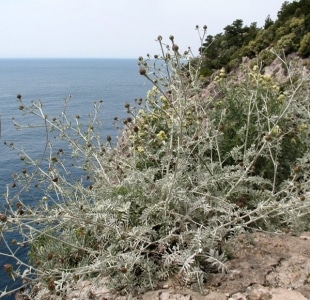

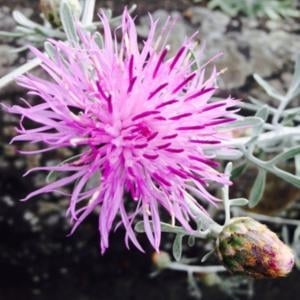


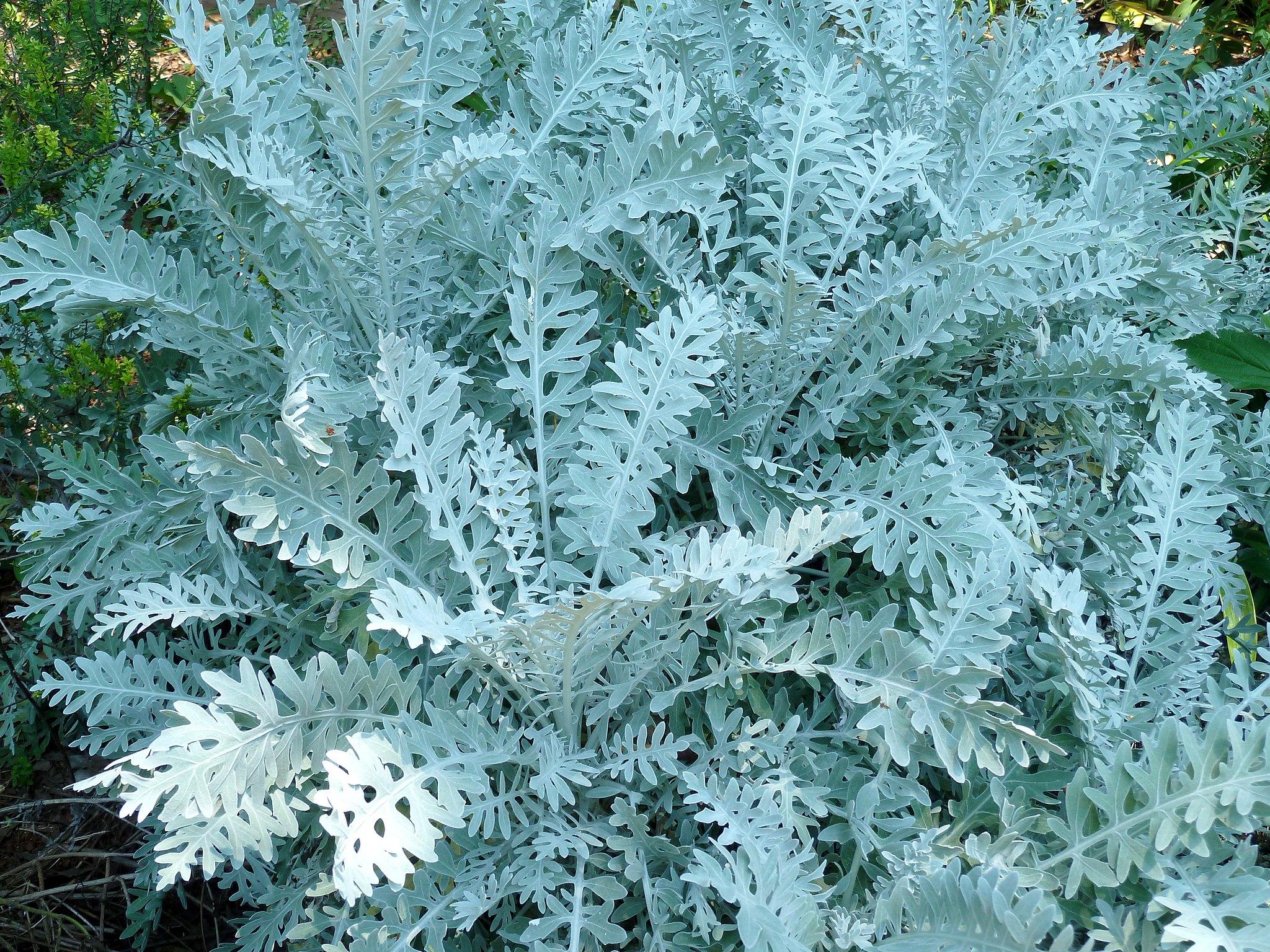
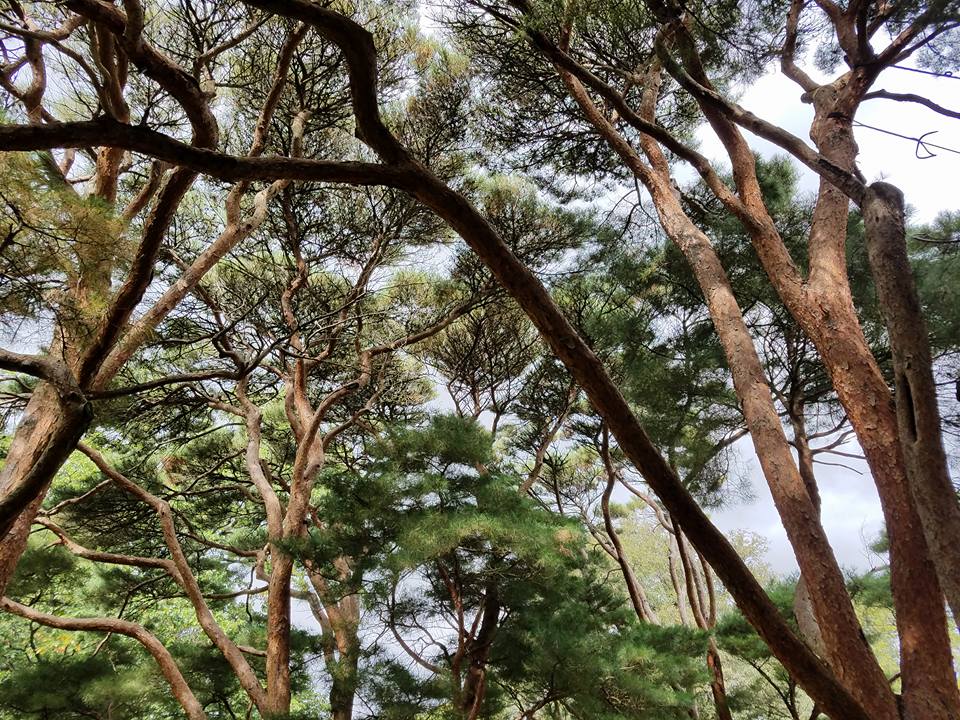
Pingback: Centaurea cineraria
Pingback: Jacobaea maritima